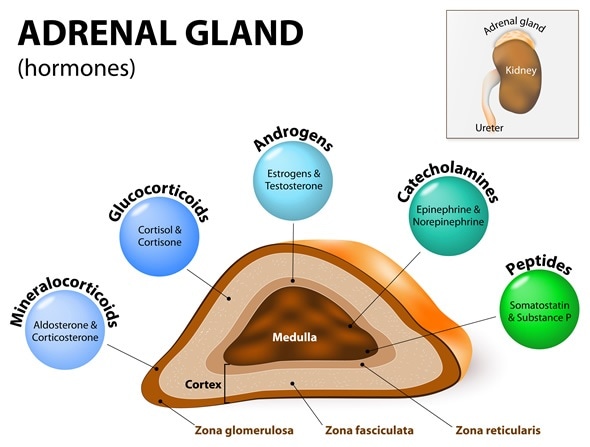

Each gland has an outer cortex which produces steroid hormones and an inner medulla. The adrenal glands (also known as suprarenal glands) are endocrine glands that produce a variety of hormones including adrenaline and the steroids aldosterone and cortisol.
Pagon RA, Adam MP, Ardinger HH, et al. Hyperaldosteronism - Primary and Secondary. National Institute of Neurological Disorders and Stroke. NINDS Cushing's Syndrome Information Page. Clinical presentation and evaluation of adrenocortical tumors. Excess amounts of androgens can cause an increase in masculine characteristics (virilization) such as increased facial and body hair (hirsutism) deepening of the voice increased muscularity and other characteristics. īenign cortisol-secreting adenomas can also produce small amounts of androgens (steroid hormones, such as testosterone), although androgen levels in the blood are usually not elevated. Symptoms of this condition may include high blood pressure, fatigue, headache, muscle weakness, numbness and paralysis that comes and goes. This hormone is responsible for balancing the levels of sodium and potassium in the blood. Primary aldosteronism (also called Conn syndrome) is a condition in which the adrenal gland produces too much of the hormone aldosterone. Mild hypercortisolism without any obvious symptoms, called subclinical Cushing's syndrome, is common in people with an adrenal incidentaloma, although glucose intolerance and hypertension may be present in these cases. Affected women may have increased growth of facial and body hair, and menstrual periods may become irregular or stop completely. Common symptoms of Cushing's syndrome can include upper body obesity severe fatigue and muscle weakness high blood pressure backache high blood sugar easy bruising and bluish-red stretch marks on the skin. Ĭushing's syndrome, also called hypercortisolism (having abnormally high levels of cortisol), is caused by adrenal adenomas that release excess levels of the hormone cortisol. Depending on the type of hormone released, adrenal tumors can cause a variety of conditions, including Cushing's syndrome, primary aldosteronism, or much less commonly, virilization. However, some can become "functioning" or "active" and secrete excess hormones. They are often found incidentally during imaging studies of the abdomen, in which case they are referred to as adrenal incidentalomas. The majority of adrenal adenomas are "nonfunctioning", which means they do not produce hormones and usually do not cause any symptoms. Table of Contents expand submenu for Table of Contents. Preguntas Más Frecuentes Sobre los Trastornos Cromosómicos. Consejos Para Obtener Ayuda Financiera Para Una Enfermedad. Consejos Para una Condición no Diagnosticada. Como Encontrar un Especialista en su Enfermedad. Preguntas Más Frecuentes Sobre Enfermedades Raras. Guías de Información expand submenu for Guías de Información. En Español expand submenu for En Español. About GARD expand submenu for About GARD. Teachers and Students expand submenu for Teachers and Students.  Researchers expand submenu for Researchers. Caring for Your Patient with a Rare Disease.
Researchers expand submenu for Researchers. Caring for Your Patient with a Rare Disease. 
Healthcare Professionals expand submenu for Healthcare Professionals.Patients, Families and Friends expand submenu for Patients, Families and Friends.

Find Diseases By Category expand submenu for Find Diseases By Category.








 0 kommentar(er)
0 kommentar(er)
